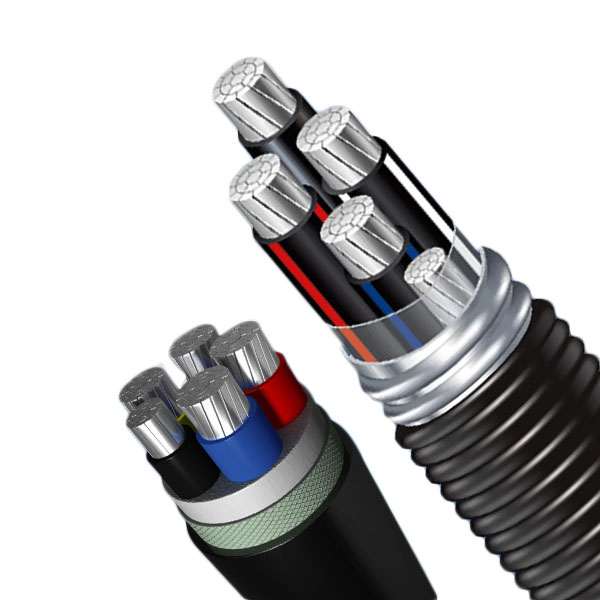
1.Main material and structure
Aluminum alloy cables are manufactured with AA8030 series aluminum alloy material as conductor, through special tight pressing process and annealing treatment and other advanced technologies.
The cable structure usually includes conductor, insulation layer, sheath and other parts, and some models also contain filler or shielding layer.
2.Performance Characteristics
(1)Conductivity: The conductivity of aluminum alloy is about 61.8% of that of copper, and the current-carrying capacity is 79% of that of copper, which is better than the pure aluminum standard.
(2)Weight Advantage: Aluminum alloy cables are about half the weight of copper cables, making them easy to install and maintain and reducing installation costs.
(3)Mechanical properties: aluminum alloy cables have excellent creep resistance, tensile strength and elongation, as well as good flexibility.
(4)Corrosion resistance: Aluminum alloy cable can form an oxide layer on the surface, and the addition of rare earth elements can further improve the corrosion resistance, especially suitable for harsh environments.
(5)Coefficient of thermal expansion: The coefficient of thermal expansion of aluminum alloy is comparable to that of copper, making it suitable for use with copper conductor connectors.
3.Common models and specifications
Aluminum alloy cables have various models and specifications, such as ZC-TC90(-40) (also known as YJHLV, YJXLHV, YJLHV, YJGLHV, YJGLHBV, etc.), which are suitable for different voltage levels and application scenarios.
The cable conductors can be single-core or multi-core, and the voltage levels cover a wide range from 0.6/1kV to 26/35kV.
Applications
1.Power Industry
Aluminum cables are widely used in transmission lines, substation contact lines, power distribution systems and other fields to ensure the stability and reliability of power transmission.
2.New Energy Development
Aluminum alloy cables support the large-scale transmission of new energy sources such as solar and wind energy, providing a reliable means of power transmission for the development and utilization of clean energy.
At the same time, aluminum alloy cables have good recyclability and reusability, in line with the requirements of sustainable development.
3.Industrial production
In factories, mines, manufacturing and other places, aluminum alloy cables are used for the electrical connection of various equipments and machines, adapting to high temperature, high humidity and other harsh working environments.
4.Transportation
Aluminum alloy cables can be used for the power supply of rail transportation systems such as subways and streetcars, as well as the power transmission of electric vehicle charging piles, supporting the sustainable development of urban transportation.
5.Residential and Commercial Buildings
Aluminum alloy cables are used to connect power supply, lighting, air-conditioning and other electrical equipment in residential and commercial buildings, hospitals, schools, libraries and other public facilities, reducing construction costs and ensuring electrical safety.
6.Special Occasions
In high-rise buildings, ancient buildings, military bases, aerospace and other special occasions, aluminum alloy cable’s lightweight and high-strength characteristics make it an ideal choice for electrical wiring.

© All Rights Reserved.